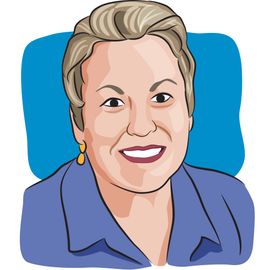- About Us
- Advertise / Support
- Editorial Board
- Contact Us
- CancerNetwork.com
- TargetedOnc.com
- OncLive.com
- OncNursingNews.com
- Terms & Conditions
- Privacy
- Do Not Sell My Information
- Washington My Health My Data
© 2025 MJH Life Sciences™ and CURE - Oncology & Cancer News for Patients & Caregivers. All rights reserved.
Beyond "Cured"

Kathy LaTour is a breast cancer survivor, author of The Breast Cancer Companion and co-founder of CURE magazine. While cancer did not take her life, she has given it willingly to educate, empower and enlighten the newly diagnosed and those who care for them.
A survivor learns the difference between being cured of cancer and being healed.
Although my breast cancer was diagnosed in 1986, it didn’t really come to stay until 1988. That’s when I asked my oncologist how long it would be before I was considered “cured.” It had been a difficult 18 months, and my psyche was a mess. Did I have cancer, or had I had cancer?
Everyone around me expected me to be back to my old self, but night terrors about recurrence and a gripping fear about not being around to raise my daughter, then 2, were making my life hell. I needed to know when it would stop, when I could take control of my life again.
“Well,” my oncologist began, sensing I would not like his answer, “unlike people with cancers that are considered ‘cured’ after two or five years of remission, with breast cancer you’re cured when you die of something else.”
So now I am 20 years out and I am still not “cured.” But I am “healed,” that remarkable place we can find, with work and determination, where we understand that cancer does not come and then go. Cancer comes and stays. And if we face it head on, it can become a part of us that takes us to a new level of understanding—which can be cancer’s greatest gift.
Then one day I could not stop crying, a terrifying event for someone always in control. The box was open, and the contents had spilled into my heart and soul.
It took me another year after that doctor’s visit to finally get down to the work of cancer resolution — to live the rest of my life with the uncertainty I had been handed. For three years I had stuffed all the feelings of cancer—fear, tears, anger, anxiety—into a box that I kept tightly locked in my gut. I answered friends’ queries about how I was with, “fine, fine.”
Then one day I could not stop crying, a terrifying event for someone always in control. The box was open, and the contents had spilled into my heart and soul.
That summer of 1989, which my family calls the summer of the flood, led me to a breast cancer support group, where for the first time I understood some basic truths about how we “do” cancer. When my cancer was diagnosed, I poured all my time and energy and feelings into gathering and understanding information—what I call “head work.” During chemo, I was surrounded by friends and people bringing food. Then, when treatment ended, I was left feeling disconnected. I had yet to grapple with the feelings of cancer, but everyone around me was encouraging me to get back to “normal.”
It was with the remarkable women in my support group that I did the work of resolution, unlocking my feelings, and owning my fear for my future and my daughter’s future. I understood, for the first time, the cancer journey and the milestones that take us to resolution.
That summer I finally accepted that I might die. The Valley of the Shadow of Death is a real place for those who have had cancer, but to live our lives we must face the valley and make it our own. I tell women to move in, hang curtains, and find a place to get comfortable with the idea of death.
For me to get comfortable with the idea of dying, I had to deal with my greatest fear, leaving my daughter. I called friends and assigned them very specific responsibilities in my daughter’s life should that happen. When I finished I felt a buoyancy I had never before experienced.
My support group named this last milestone of resolution “crash and burn.” We all agreed that it was a violent description that perfectly fit what had happened to us. We had been rearranged—body and soul.
But cancer’s gift comes from the ashes of “crash and burn,” a new creature, like the phoenix, stronger and tempered by fire to live a new life.
By fall that year, I understood the journey beyond “cured” to “healed.” Cured will always be about the body, the physical self. Healed is about the soul and spirit, recognizing that “self” goes beyond blood and bone to another dimension. Or, put simply:
To be well is to be cured. To be whole is to be healed.
Related Content:



